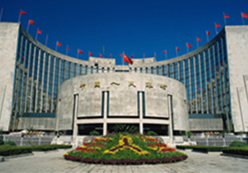 The current macroeconomic environment is far more unpredictable and difficult than just a few years ago. Asia’s central banks must evolve in order to adapt to this new landscape.
The current macroeconomic environment is far more unpredictable and difficult than just a few years ago. Asia’s central banks must evolve in order to adapt to this new landscape.
Usually, a central bank’s role is to keep inflation low and stable. But with recent upheavals and financial market turmoil, they have also been charged with maintaining financial stability. To do this, central banks must increasingly work together and coordinate with other authorities.
Such coordination—central to the region’s successful navigation of the 2008–2009 global financial crisis— does have implications for central bank objectivity. Central banks do not want to lose their often hard-won independence—an important factor in their operational effectiveness.
Central bank autonomy, fiscal discipline, openness, and transparency are prerequisites for macroeconomic credibility—critical for both the market and the public when it comes to policy rate adjustments and inflation targeting. Without autonomy, a central bank may lack sufficient credibility to help manage inflation expectations and achieve targets.
However, to meet the new challenges presented by more open financial systems, central banks must work more closely with fiscal authorities and financial regulators. Economic policymakers together shape the environment in which their policies operate, and their policies should be reinforcing to achieve common goals.
Monetary and fiscal coordination
A key to the impressive track record of the more credible emerging East Asian economies is effective coordination between monetary and fiscal authorities.
The eurozone debt crisis shows how fiscal management affects macroeconomic and financial stability. Monetary policy must take into account the impact sovereign debt management has on an economy. For example, central banks may work with fiscal authorities on levels of sustainable fiscal and public debt.
This does not require central banks to surrender independence, but rather to engage more with fiscal authorities to ensure that cross-purposes do not lead to a loss of credibility.
How does this relate to financial stability?
Maintenance of financial stability
After 2008–2009, many analysts and policymakers suggested central banks should move beyond their traditional purview and take on financial stability as a statutory objective. Central banks can curb financial excess by providing macro-prudential supervision and regulation to limit the damage from systemic crises.
In theory, price stability promotes financial stability by anchoring inflationary expectations, reducing the risk of deflation, and helping stabilize economic activity. Yet maintaining a sound financial system itself contributes to price stability—and thus macroeconomic stability—by easing the transmission of monetary policies. This reduces the impact of macroeconomic shocks through the financial channel. Appropriate macro-prudential supervision and regulation also reduces financial stress on institutions and the system generally, reducing crisis risk and disruption to economic activity. This all helps price stability.
However, there may be a trade-off between price and financial stability in certain cases. The high growth, low inflation, and low interest rate regime over the past decades—the so-called “Great Moderation”— encouraged excessive risk taking and leverage. This led to asset bubbles, the immediate cause of the 2008–2009 crisis. In that environment, policymakers faced a trade-off between future financial and current price stability. Raising interest rates to deflate bubbles cut growth. When bubbles burst, recession followed.
Macro- and micro-prudential tools
Many central banks in Asia have taken up the macro-prudential mandate. Macro-prudential tools—such as capital requirements, additional capital buffers for banks, guidance on leverage ratios and liquidity management—are all part of the package. These tools are more of a firewall against financial excess.
Many argue that interest rate policy alone is too blunt an instrument to address financial stability. However, using macro-prudential tools for macroeconomic reasons is not as straightforward as it seems. It could easily feed back to affect interest rates and thus, monetary policy. So monetary policy must still play a role in maintaining financial stability—by “leaning” against asset bubbles. Various monetary tools—policy rates, reserve requirements and the like—can help control credit growth when it is inappropriately spent on increasingly inflated assets.
While macro-prudential policy focuses on systemic financial stress, micro-prudential supervision and regulation—sometimes done by other financial regulators—examines individual institutions, regardless of systemic consequences or the overall economic impact. This is why closer coordination between central banks with a macro-prudential mandate and other financial regulators is critical for financial stability.
Working together to avert crises
As the 2008–2009 crisis showed, sharing information and collaboration can help prevent spillovers. As Asia’s finance sector develops and integration strengthens, potential costs of future financial crises also rise. To manage these risks, central banks need to work across national and regional boundaries. This enables countries to better prevent or at least mitigate crisis impact.
Having a mechanism to sound the alarm is critical. The ASEAN+3 Economic Review and Policy Dialogue (ERPD) process is a good example of using information sharing and dialogue for regional surveillance. The ERPD process assesses global, regional, and national economic conditions; monitors capital flows and currency markets; analyzes macroeconomic and financial risk; helps strengthen banking and financial systems; and gives East Asia a voice in discussing international financial system reform. Beginning this year, the ASEAN+3 Finance Ministers Meetings will be called the ASEAN+3 Finance Ministers and Central Bank Governors Meeting. This is an important step.
Future directions
Macroeconomic and financial stability are essential to poverty reduction. Asia has come a long way in establishing frameworks to help avoid and mitigate financial crises. But there is a long journey ahead.
Central bank independence is critical. But so are dialogue, collaboration and cooperation—both within the national framework of macroeconomic and financial authorities and across boundaries regionally and globally. An Asian Financial Stability Dialogue—perhaps structured according to the EPRD process—including finance ministries, central banks, and other financial supervisors and regulators to address financial market vulnerabilities could prove effective.
This article is based on the author’s keynote speech at the 47th Southeast Asian Central Banks Research and Training Center (SEACEN) Governor’s Conference on Monetary Policy, Sovereign Debt and Financial Stability held in Seoul on 13 February 2012.




